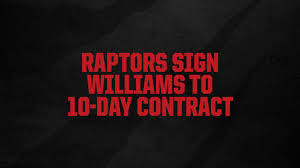Mind the Spending Gap
There’s a lot of Premier League soccer talk at out house, mainly because my two teenagers are really into soccer. One of them roots for Manchester United, or Man U, which I’ve come to learn is perhaps the most popular team in the world. The other cheers for Chelsea, another big six club with a huge following and long history. I’m kind of a soccer fan by osmosis, led mainly by my kids’ involvement and interests, so I don’t really have a team. Although I have recently declared myself an Aston Villa fan only because I saw them in person last summer and liked their uniforms. But really, it’s all the same to me.
So not surprisingly, some common qualities of popular global Premier League soccer teams is that they win a lot of championships and they spend a lot of money. And in a league like this one, the top soccer league in the world, spending can get pretty crazy. Man U spends around 250 million US dollars on salaries. That’s comparable to top American baseball teams except the New York squads, who break 300. But what’s also similar to baseball, if not more pronounced, is the spending gap between the richest and stingiest clubs. Currently the two lowest spending teams are Luton Town and Sheffield United at 31 and 43 million, respectively. To be fair, it’s likely neither of those teams will be in the Premier League next year, as they both currently land in the bottom three and poised for relegation to the Championship League, where those salaries are a bit more in favor.
Not surprisingly, Premier League standings are fairly consistent with spending, especially over time. Man City was a mediocre team until a significant influx of oil money from new ownership turned them into a superpower. Teams like Arsenal and Liverpool usually fare well because they spend. It goes down from there. And the League is set up like this, with teams at the top getting more television revenue than those at the bottom. So it’s easy to incentive teams to spend a lot of money to win to earn a lot of money.
That calculus might change, as the League is considering a new salary cap structure, even if it’s not specifically called that. There would be two components – a spending cap that anchors top spending at five times the television revenue of the lowest paid team, and a squad cost rule that would keep teams from using more than 70 or 85% of their revenue on players, transfers, and agent’s fees. Essentially, this would, as the British might say, mind the gap between worst and first and limit crazy runaway spending. As we stand, it looks like it’s going to pass – they need 14 of 20 teams to vote yes – with a few top spenders against it. And while this wouldn’t drastically change the haves and have nots, it would keep it from getting worse. And perhaps instill a bit more of a collective in spirit, as fates would be slightly more intertwined.
I won’t spend much time debated the values of a salary cap structure, something that’s worked well for the NFL and NBA in varying models. But what’s more interesting to consider as the Premier League changes it’s ethos is how American college sports might be the next “league” that needs to truly consider spending and competitive balance in the quickly evolving landscape of paid amateurs. While the imbalance in the Premier League might seem vast – it’s nothing compared to the gap in spending between big and small Division I football programs. And it will be a fraction of the percentage divide of NIL dollars earned, with players from teams like Texas and Alabama earning multiples of other teams on their schedule. And with no real rules or restrictions, the imbalance is limited only by the imagination of the richest booster hoping to win a title. Which means that if you like the lopsided play of Arsenal vs Burnley, you’ll love what’s next in college football. It’s the thing that keeps college AD’s awake at night, along with everything else. It’s also why college administrators need to increasingly embrace and own the professionalization of their college game, not stand at arm’s length like they largely have. And why for the time being, expect to see the same five teams win the title in rotation.
Then again, perhaps it’s not so bad. It’s worked across the pond for quite some time.
Keith Strudler is the director of the School of Communication and Media at Montclair State University. You can follow him at @KeithStrudler
The views expressed by commentators are solely those of the authors. They do not necessarily reflect the views of this station or its management.


 Canada
Canada Argentina
Argentina  Australia
Australia  Austria
Austria  Brazil
Brazil  Germany
Germany  Ireland
Ireland  Italy
Italy  Malaysia
Malaysia  Mexico
Mexico  New Zealand
New Zealand  Poland
Poland  South Africa
South Africa  United Kingdom
United Kingdom  United States
United States 



























